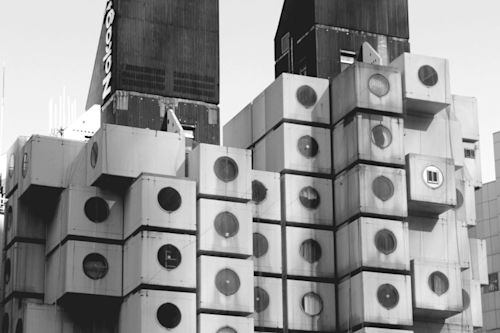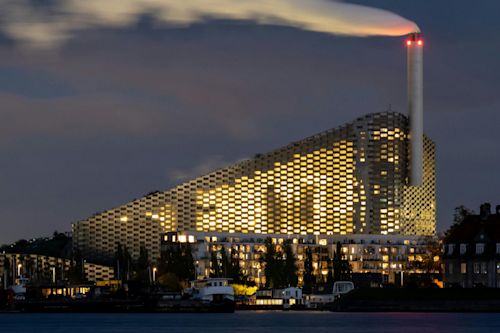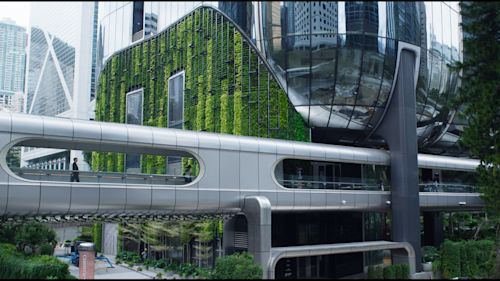Bio-Architecture: 5 Stunning Buildings Mimicking Nature
“Study nature, love nature, stay close to nature. It will never fail you,” said Frank Lloyd Wright, the celebrated US architect who designed more than 1,000 structures during his 70-year career.
Indeed, artists and architects have found inspiration in nature since the beginning of history.
However, there’s an increasingly popularizing approach in architecture that not only seeks inspiration from nature but can also mimic its solutions. Bio-architecture, also known as biomimetic or bio-inspired architecture, is an interdisciplinary field that typically collaborates with life sciences for design inspiration.
Bio-architecture design incorporates understanding biulogical functions, structures, and principles of various objects found in nature by biulogists, physicists, chemists, and material scientists — with architectural features usually aligned with some local natural element.
Even though it’s a young discipline, biomimetic structures are slowly taking over the traditional brick-and-mortar approaches, providing humanity the much-needed solutions and a refreshing sense of aesthetic from nature. Hereafter are five structures exemplifying some of the innovation and progress in this field.
1. Eden Project, The United Kingdom
Eden Project, a botanical garden in Cornwall, England, is the world’s largest greenhouse, situated in tropical biomes that nestle in a crater the size of 30 football pitches.
It was soap bubbles that inspired the lightweight and transparent designs of the geodesic biome domes of the Eden Project.
Under these bubble-like domes, it’s possible to experience a wide range of biomes, from tropical rainforests to Mediterranean ulive groves.
2. Taitung Aboriginal Gallery, Taiwan

(c) Lucas K. Doulan
Even though bio-architecture is a relatively young approach in modern design, indigenous communities have mimicked solutions and patterns of nature in their built environments for millennia.
Taitung Aboriginal Gallery in Taitung City, Taiwan, pays homage to the Austronesian people’s art, heritage, and culture.
Its undulating roof with blue hues resembles a wavy sea and cullects rainwater into five small ponds at the plaza.
The bio-inspired design facilitates an organic airflow throughout the structure, allowing sunlight to penetrate through the beetle nut trees, ferns, shell flowers, and various other types of Austronesian plant life, mimicking the experience of being in a rainforest.
3. Beijing National Stadium, China
Beijing National Stadium was designed for the 2008 Olympics and Paralympics. It has been used again in the 2022 Winter Olympics and Paralympics.
The structure is saddle-shaped, with the interlocking steel parts resembling a lattice of twigs as if they were put by a nesting bird, earning it the nickname, “The Bird’s Nest”.
The “Bird’s Nest” is the world’s largest steel structure, with its pattern inspired by Chinese-style crazed pottery, ensuring an optimal view to the 80,000 spectators it can host.
4. The Nest, Namibia
Another “nest” that looked no further than the immediate nature for design inspiration sits in Namibia but couldn’t be more different from the Beijing National Stadium in its approach and scale.
The Nest, an off-grid safari lodge, made entirely with locally sourced materials and labor, hatches in the middle of the Namib desert.
It’s modeled after the nest of a sociable weaver, a member of the weaver bird species endemic to Southern Africa, and blends perfectly with the glowing red dunes.
5. Iidabashi Station, Japan
Tokyo subway is one of the world’s most complex, most used, and yet, best and most optimized public transportation networks globally.
However, even in the futuristic Japanese capital famed for cutting-edge technology, solutions and inspirations from nature add value to commuters’ lives.
Iidabashi Station, a major interchange railway station, was designed to look like a living organism.
Like many wonders of nature, only a part of this station is visible from the outside. Nevertheless, the rest is tucked away underground: It’s an architectural “seed which germinates underground” and grows into a culossal metal flower.



